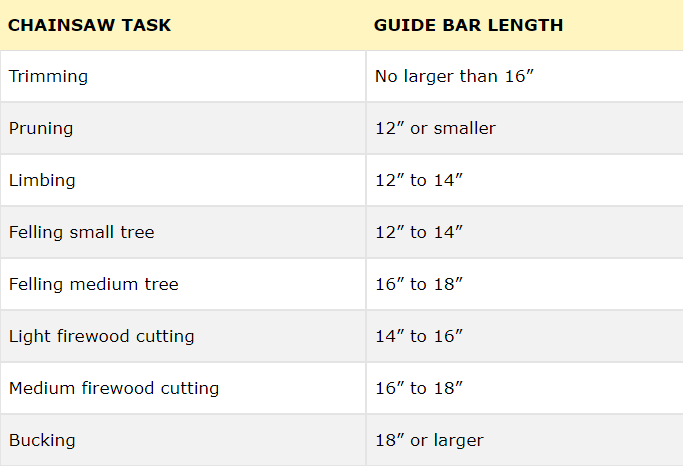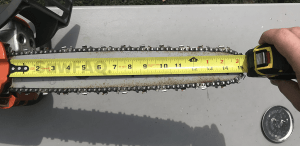You might think that deciding how long a blade you should look for when you purchase a chainsaw is a straightforward process. After all, bigger is always better right? That may be true for some things, but it’s not right for everything. There are a lot of factors you have to consider when buying a chainsaw. You need to understand what you’re going to be using the chainsaw for before buying. You can decide how long a blade you need. It’s always a good idea to take a step back and look at the whole picture before making any major purchase. The same applies when it comes to purchasing a chainsaw.
The chainsaw’s body or packaging holds the 2-stroke (gas) or 3 stage AC engine (electric) and a vast number of different parts. Be that as it may, the more significant elements are that jut for cutting: the bar and the chain.
It’s essential to note that few out of every odd bar or chain will work for every saw. For example, bigger chainsaw bars work well with all the more powerful motors since it takes more energy to drive the string around the bar. This is additionally why most electric chainsaws are commonly smaller at around 12-14″. They don’t have the required amperage to drive the chain successfully.
A chain that doesn’t fit appropriately on your chainsaw presents a dangerous hazard. On the off chance that you are uncertain in any way about the estimating size of your chain, you ought to have it adjusted by an expert. Before you take out your measuring tape, you should consider your chainsaw’s proprietor manual. On the off chance that you’ve lost it, you can almost certainly discover the maker’s site and find it on the web.
On the off chance that you aren’t keen on finding the model number and finding the subtleties, don’t worry! You can determine the length all alone.

Measuring the Chainsaw Bar Length
The standard bar lengths for chainsaws are 10, 12, 14, 16, 18, and 20 inches to introduce. Be that as it may, longer bars do exist and can surpass 24 inches. When taking a measurement, you ought to adjust to the closest even whole number.
- Using your tape measure, measure from the front tip back to the cutter closest to the body.
- Round the measurement to the nearest even number in inches. For instance, if you measured 15″, you’ll need a 16″ bar. If you record 18.75,” you’ll need a 20″ bar.
It’s as straightforward as that. When you have the bar length, you can purchase a substitution bar that meets that length prerequisite.
Measuring the Length of your Chainsaw’s Chain
Notwithstanding deciding the bar length of your chainsaw, you ought to have the option to measure your chain’s pitch, gauge, and drive links.
To begin, you should check the number of drive links that the chainsaw has.

Measuring Pitch
To decide the pitch or chain size, you’ll need to measure the distance between the centers of three consecutive rivets and then divide this by 2. The rivets are the small, round studs that hold the chain segments together. The resulting quotient is the size of the chain’s pitch. The standard sizes for pitch are 0.375″ and 0.325″.
For a straightforward calculation of the chain pitch, this is a shorter equation:
Chain Pitch = [distance between 3 consecutive rivets]/2
Measuring Gauge
The chain’s gauge is a proportion of the thickness of the drive links. In a perfect world, you can affirm this estimation by utilizing calipers and checking the drive links’ width. Anyway, a quicker method of doing so is using a smart trick with coins.
- Grab a quarter, a penny, and a dime.
- Clean the debris from the bar’s groove.
- Slide each coin into the chainsaw bar groove without being forced
Determine which fits and associate the coin with a specific gauge measure below.
Quarter = 0.063
Penny = 0.058
Dime = 0.050
Conclusion
On the off chance that you include the pitch and gauge, you are currently ready to decide the size of your chain, where the size of your chain pitch, in addition to the number of your drive links, is indicative of the required length.
Hopefully, this article has helped you understand a lot about the subject.